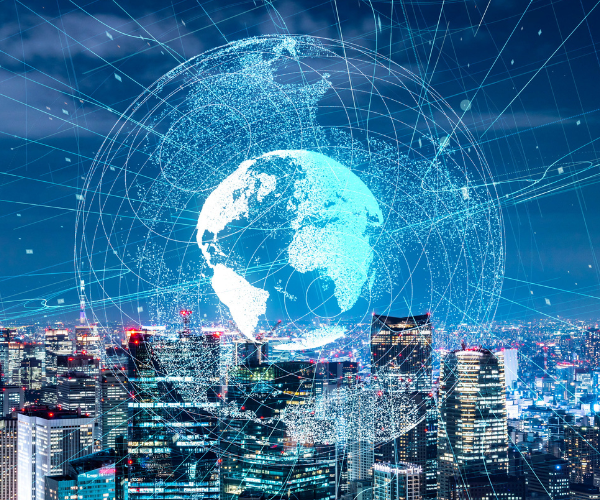How Artificial Intelligence is Transforming Smart Cities
Artificial Intelligence (AI) and the Internet of Things (IoT) are radically transforming the concept of smart cities, creating urban environments that are increasingly connected, secure, and efficient. With advancing technology, cities worldwide are integrating AI and IoT-based solutions to improve citizens’ quality of life and optimize resource use. This article explores how these technologies are shaping the cities of the future.
What is the Internet of Things (IoT)?
The Internet of Things (IoT) is a system of connected devices that collect, exchange, and analyze data in real-time. Everyday objects, from household appliances and vehicles to sensors and urban infrastructure, are equipped with sensors that allow them to communicate with each other and centralized systems. This continuous flow of data provides valuable insights that can be used for smarter decision-making.
How AI Enhances IoT in Smart Cities
AI plays a critical role in enhancing IoT capabilities. While IoT focuses on data collection and transmission, AI analyzes this data in real-time, providing valuable insights and predictive solutions. AI’s ability to learn and adapt improves the performance of IoT systems, enabling quicker and more accurate decisions.
Applications of AI and IoT in Smart Cities
- Traffic and Transportation Management
AI and IoT are proving most effective in traffic management. IoT sensors installed on roads and vehicles collect real-time traffic data. AI, using machine learning algorithms, analyzes this data and optimizes traffic lights, reducing congestion and improving urban mobility. Moreover, AI can predict peak hours and suggest alternative routes to drivers, reducing travel time and air pollution.
- Sustainable Energy and Energy Efficiency
Smart cities use IoT to monitor and control energy consumption in real-time. Smart sensors can detect energy use in buildings and public infrastructure, while AI optimizes consumption by reducing waste. For instance, public lighting systems can automatically adjust brightness based on traffic or weather conditions, saving energy.
- Security and Surveillance
Public safety is another area where AI and IoT are essential. IoT surveillance cameras, combined with AI systems, monitor suspicious behavior in real-time, identify emergencies, and send alerts to law enforcement. Real-time data analysis allows for quicker responses to incidents, enhancing urban security.
- Waste Management
Smart cities use IoT sensors to monitor waste bin levels and optimize garbage truck routes. AI analyzes the collected data to plan more efficient routes, reducing operational costs and improving waste management. This leads to cleaner cities and a more sustainable approach to resource management.
- Public Health and Well-being
IoT health devices, such as wearable sensors and environmental monitors, collect data on citizens’ physical and environmental well-being. AI can analyze this data to provide public health forecasts, monitor epidemic diseases, and improve healthcare services. Additionally, AI can optimize emergency medical responses, enabling quicker and more targeted interventions.
The Future of Smart Cities
As the number of connected IoT devices increases and AI continues to advance, the cities of the future will be able to make autonomous decisions, enhancing citizen experience and optimizing resource use in real-time. AI and IoT are changing the face of modern cities, transforming them into connected, intelligent environments capable of tackling future urban challenges. The integration of these technologies will improve the quality of life, reduce costs, and promote sustainability, opening new opportunities for urban management and safety. As these solutions evolve, smart cities will become more efficient, sustainable, and responsive to citizens’ needs, bringing technology to serve the common good.


